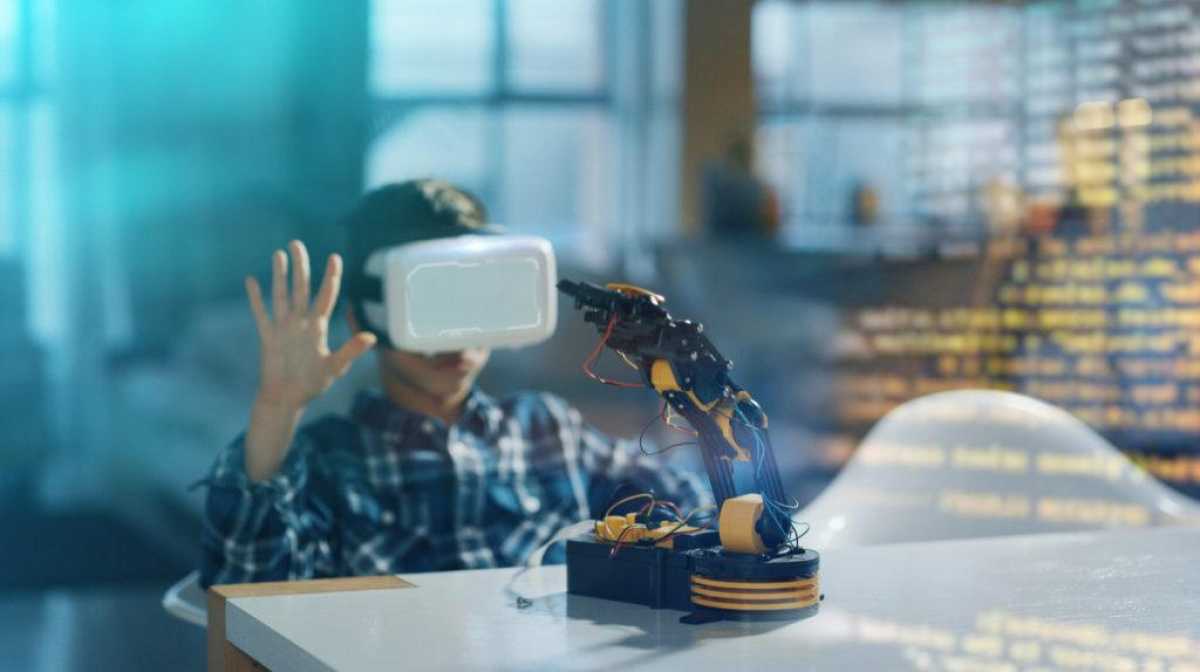Features
The Impact Of Augmented Reality In Education

Over the years, technology has played a significant role in transforming the education sector. With the rapid advancement in Augmented Reality (AR), it has become an innovative tool that is reshaping the way students learn and teachers teach. AR overlays digital information onto the real world, creating an interactive and immersive learning experience. In this article, we will explore the various ways in which AR is making an impact in education.
Enhancing Visual and Experiential Learning
One of the key benefits of AR in education is its ability to enhance visual and experiential learning. With AR, students can interact with digital objects in a real-world context, making abstract concepts more tangible and easier to understand. For example, students studying astronomy can use AR apps to view and explore the solar system in detail, seeing planets and their movements from different perspectives. This hands-on experience deepens their understanding and engagement with the subject.
Stimulating Engagement and Motivation
AR technology has the power to captivate students’ attention and increase their motivation to learn. By blending virtual content with the real environment, AR creates a sense of wonder and excitement. Students can actively participate in interactive simulations, games, and quizzes that make learning more enjoyable. This gamification of education helps in maintaining focus, increasing retention, and fostering a positive learning experience.
Improving Collaboration and Social Learning
Collaborative learning is essential in developing teamwork and communication skills. AR facilitates collaboration by enabling students to work together on projects and activities. They can interact with the same virtual objects simultaneously, fostering cooperation and sharing ideas. For instance, students in a biology class can use AR to dissect virtual organisms and discuss their findings as a group, promoting a cooperative learning environment.
Personalizing Education and Catering to Individual Needs
Every student has unique learning needs and preferences. AR can be tailored to individual students, allowing them to learn at their own pace and style. Educators can create custom AR experiences that align with different learning objectives and adapt to students’ abilities. By providing personalized feedback and guidance, AR empowers students to take ownership of their learning journey, enhancing their overall academic performance.
Enabling Remote Learning and Digital Accessibility
AR has become increasingly valuable in the context of remote learning and digital accessibility. With AR, students can have a virtual classroom experience from anywhere in the world. Teachers can create immersive learning materials that can be accessed by students with different needs and abilities. AR also bridges the gap between physical and digital learning spaces, enabling a seamless transition between in-person and remote learning environments.
Preparing Students for Future Careers
The integration of AR in education equips students with valuable skills that are increasingly demanded in the job market. AR technology is widely used in industries such as engineering, architecture, healthcare, and more. By exposing students to AR at an early stage, they gain experience in using this emerging technology, making them better prepared for future careers that involve AR applications.
In conclusion, Augmented Reality is revolutionizing the education landscape by providing an immersive, engaging, and personalized learning experience. It enhances visual and experiential learning, stimulates student engagement and motivation, promotes collaboration and social learning, caters to individual needs, enables remote learning, and prepares students for the future. As AR continues to evolve and become more accessible, its impact on education is only set to grow, shaping the way we acquire knowledge and skills.










